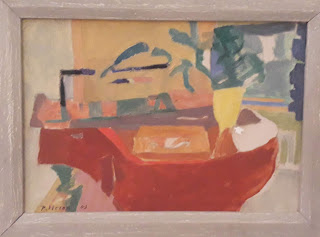A one week project this week on EDAM course with Lucinda on scale and process using projections.
I had to leave early as I was feeling unwell with my first cold in 2 years. After a few days with mornings in bed feeling sorry for myself I'm on the mend tho' going through a lot of tissues.... So I was definately under parr when it came to collaborating in small groups , trying to make decisions - some nice work produced by others but not by me !
Started off with Lucinda demonstrating different way of using acetates on OHP projector . I liked the idea of projecting images as large as possible and getting inside the painting/ drawing yourself or putting a sheet over yourself and having image projected on you or casting the picture around the room.
Our small group had fun layering acetates of our drawings - quite different marks and styles, although perhaps 4 people was too much - ( there were only a limited number of OHP's). Drawing onto paper from the projections and then switching it off , showed some interesting results ( below)
The introduction of colour and different kinds of marks
Using a acetate photocopy of one of my photos of boats at Iron Wharf gave a different dimension
Then Janet added some vigorous ink marks replicating the lines on projected building
Final piece after some more additions of colour - not great art or composition but definately a record of processes!
I used OHP projections as part of Contemporary Painting Studio course with Lucinda - it wasn't really a technique that worked for me - I prefer to do manipulations etc in Photoshop. However they had some dinky little digital projectors which some people were using with tablets etc and that gave me the push to get round to replacing my laptop ( new one arrived today) and I'm on the lookout now for a digital projector that I can also use for talks.
I've used a slide projector in the past to scale up my photos ( including sand dunes in Morocco for quilted piece 'Erg Chebbi' ) so I'm keen to explore new technology.
































































